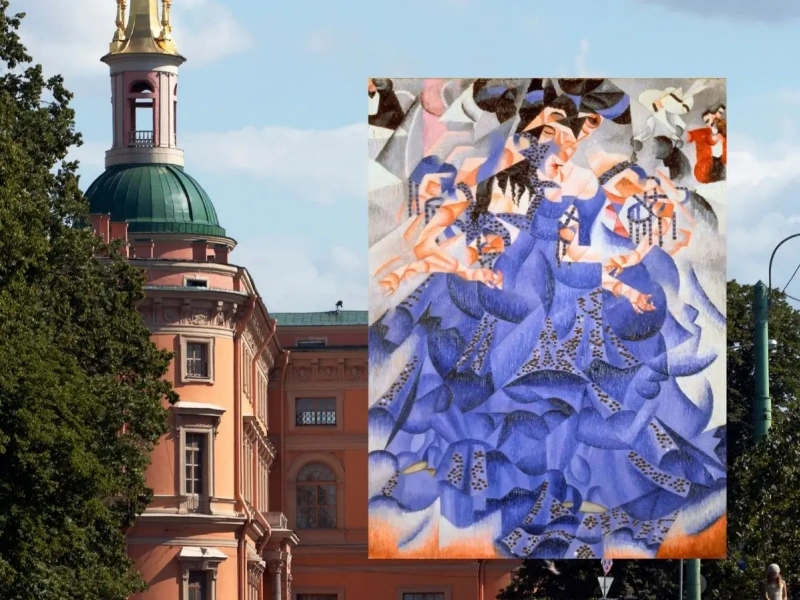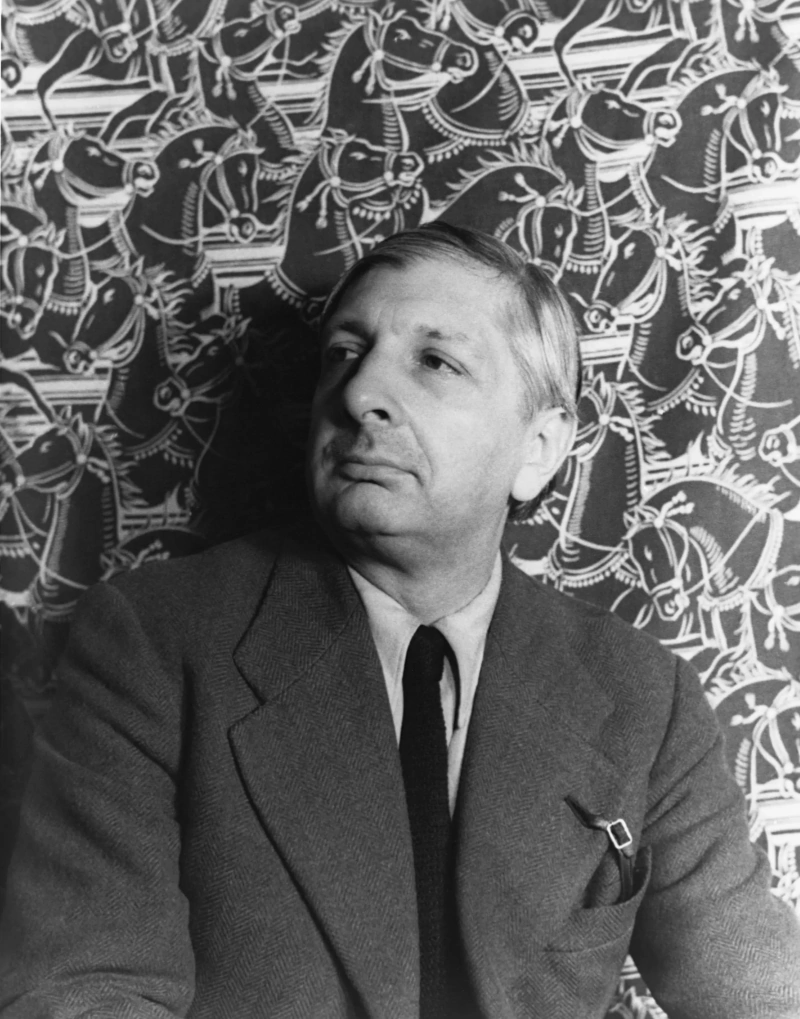log in
Enter site
Login to use Arthive functionality to the maximum
Giorgio Morandi (July 20, 1890, Bologna – June 18, 1964, Bologna) is an Italian artist, painter and printmaker, a harbinger of minimalism, whose artistic search got him through the stages of Futurism, Cubism, Abstract art and Mystical painting.
Giorgio Morandi's artistic style: an artist who always painted still-lives and landscapes, collected in his workshop objects of different shapes and depicted them dozens of times in various combinations. In his art, he freed all the items from stickers, drawings and labels, leaving their form pure. Compositional decisions, colour range, monumentality and the tangibility of objects in his paintings is the influence of Cézanne, and a powerful link with Renaissance Italian artists, Giotto, Masaccio, Paolo Uccello, Piero della Francesca, and Caravaggio.
Famous paintings by Giorgio Morandi: Metaphysical Still Life (1918), Still Life (1918).
Giorgio Morandi is a painter who lived the life style of a recluse in one city, sharing his house with his sisters. He was called a "monk", who slept and created endless still-lives in the same room. There were also cups, bottles, jugs, vases, painted bars and mannequins, which he had depicted through the years in various combinations, spending hours trying to put them in the necessary architectural ensemble. “I have a secret crush on painting. And I'm ok with that,” he said. All this is now called "the myth of Morandi". A sterile story, rid of uncomfortable and unattractive moments. At first glance, all the events of his non-eventful life are connected with art. Yet, he was an Italian, experiencing two world wars and the fascist regime. Only in the 21st century, there appeared studies, ruthlessly changing the image of the village recluse.
After studying, Giorgio experienced Rome, Venice, international exhibitions with halls devoted to Renoir and Corot and to himself – in the company of Roman futurists. He earned his living by teaching, as he worked in primary school for another 15 years as a drawing teacher.
The 25-year-old Giorgio Morandi spent only a few months in the army – he was invalided out due to a nervous breakdown.
Upon the rise of the Fascist Party in Italy, the avant-garde painter Giorgio Morandi suddenly began receiving commissions and posts and participating in the Biennale and Quadriennale. In 1930 he became Professor of Etchings at the Bologna Academy of Fine Arts. Morandi's friends, artists and magazine critics introduced him to the wealthiest and most influential collectors of the country, which allowed his architectural, laconic still-lifes gain popularity.
The intellectual fascist elite was the first to undertake the creation of their own convenient myth of Morandi. They came up with the name "pure" to describe his informal and politically neutral painting, sweeping away all the French post-impressionist, futuristic, cubist, any avant-garde influence and coincidence. Still, Morandi didn't fit into the iconography of censored, opportunistic images and plots: the artists who adopted the regime created military art, glorified motherhood and by all means focused on an inspired human figure. And he, a stubborn loner, continued building cities from bottles and vases.
This couldn't last long. With the approach of war, political censorship became tougher, and the range of permissible artistic liberties – narrower. And immediately after his grand success, the victory at the Quadriennale and the award of 50 thousand, Morandi got a new status: the painter's former friends-critics betrayed him and wrote devastating reviews, closing exhibition halls for him.
Upon the outbreak of the war, he went to the village of Grizzana, to his family’s country house, where at that time lived his sisters.
Morandi died of lung cancer at the age of 74. In the same city and in the same house where he was born.
Author: Anna Sidelnikova
Lire la suite
Giorgio Morandi's artistic style: an artist who always painted still-lives and landscapes, collected in his workshop objects of different shapes and depicted them dozens of times in various combinations. In his art, he freed all the items from stickers, drawings and labels, leaving their form pure. Compositional decisions, colour range, monumentality and the tangibility of objects in his paintings is the influence of Cézanne, and a powerful link with Renaissance Italian artists, Giotto, Masaccio, Paolo Uccello, Piero della Francesca, and Caravaggio.
Famous paintings by Giorgio Morandi: Metaphysical Still Life (1918), Still Life (1918).
Giorgio Morandi is a painter who lived the life style of a recluse in one city, sharing his house with his sisters. He was called a "monk", who slept and created endless still-lives in the same room. There were also cups, bottles, jugs, vases, painted bars and mannequins, which he had depicted through the years in various combinations, spending hours trying to put them in the necessary architectural ensemble. “I have a secret crush on painting. And I'm ok with that,” he said. All this is now called "the myth of Morandi". A sterile story, rid of uncomfortable and unattractive moments. At first glance, all the events of his non-eventful life are connected with art. Yet, he was an Italian, experiencing two world wars and the fascist regime. Only in the 21st century, there appeared studies, ruthlessly changing the image of the village recluse.
Before the First World War
He was the oldest child in the family. When the father of the family died in 1909, the 19-year-old Giorgio, a student at the Academy of Fine Arts of Bologna, had to take care of his mother and three sisters (the youngest one was only three years old). The artistic life of Bologna was a conservative swamp, peacefully splashing in the traditions of 600 years of firmness and not accepting any new currents. Therefore, Morandi's own visual research appalled the teachers of the Academy. Even copying Rembrandt was considered heresy there. And articles on Impressionism and Cubism styles in the magazine La Voce, with black and white reproductions (which were quite enough for the young Morandi) were an unforgivable fall.After studying, Giorgio experienced Rome, Venice, international exhibitions with halls devoted to Renoir and Corot and to himself – in the company of Roman futurists. He earned his living by teaching, as he worked in primary school for another 15 years as a drawing teacher.
The 25-year-old Giorgio Morandi spent only a few months in the army – he was invalided out due to a nervous breakdown.
Between the World Wars
In 2005, American artist Janet Abramovich, his former student, wrote the first biographical study about her teacher, tracked down letters, documents and interviewed Bolognese acquaintances of the painter. The artist, after whose death researchers spent 50 years collecting catalogs of his works and getting by with art studies, finally received a full-fledged biography. And "the myth of Morandi" began to fracture.Upon the rise of the Fascist Party in Italy, the avant-garde painter Giorgio Morandi suddenly began receiving commissions and posts and participating in the Biennale and Quadriennale. In 1930 he became Professor of Etchings at the Bologna Academy of Fine Arts. Morandi's friends, artists and magazine critics introduced him to the wealthiest and most influential collectors of the country, which allowed his architectural, laconic still-lifes gain popularity.
The intellectual fascist elite was the first to undertake the creation of their own convenient myth of Morandi. They came up with the name "pure" to describe his informal and politically neutral painting, sweeping away all the French post-impressionist, futuristic, cubist, any avant-garde influence and coincidence. Still, Morandi didn't fit into the iconography of censored, opportunistic images and plots: the artists who adopted the regime created military art, glorified motherhood and by all means focused on an inspired human figure. And he, a stubborn loner, continued building cities from bottles and vases.
This couldn't last long. With the approach of war, political censorship became tougher, and the range of permissible artistic liberties – narrower. And immediately after his grand success, the victory at the Quadriennale and the award of 50 thousand, Morandi got a new status: the painter's former friends-critics betrayed him and wrote devastating reviews, closing exhibition halls for him.
Upon the outbreak of the war, he went to the village of Grizzana, to his family’s country house, where at that time lived his sisters.
After the Second World War
Morandi studied the art of etching technique on his own while being a student at the Academy. Until 1956, he remained a teacher of the Academy, recognized as the best engraver in Italy, with students from different countries aspiring to become part of his class. After his victory in the Venice Biennale in 1948, he, who never left the country before, adamantly refused to display his works there, and finally visited Paris. And, having returned home, he would wipe the dust off his vases, cups and bottles, and arrange them on the table, inventing new compositional combinations and naming each new picture just like hundreds of the previous ones: "A Still-Life". In the first post-war years, new politicized critics, as well as the deposed politicized ones, would reproach the artist for elitist detachment and unwillingness to participate in the life of the nation. Over time, his mind would be cleaned of fascist ties and the quotes from Pro-fascist art magazines would be erased. "The myth of Morandi" would begin to take its' shape, containing only one thing that remained true in all political regimes: he was sure that painting should have nothing to do with politics. Never changing his artistic principles, he left his descendants the freedom to juggle the facts of his life as they please, but no opportunity to take advantage of his paintings in their own interests.Morandi died of lung cancer at the age of 74. In the same city and in the same house where he was born.
Author: Anna Sidelnikova
-
Les œuvres ont eu du succès36 users
- Artworks in 36 selections










